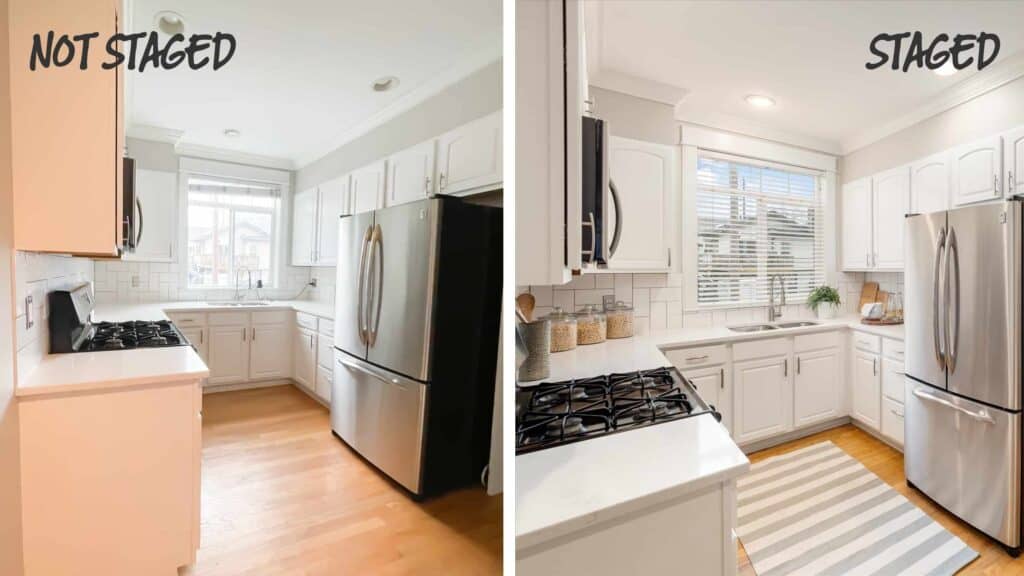Selling a house is not a simple thing to do. It is a monumental task that requires careful planning and preparation, follow through, and emotional readiness. Whether you’re a first-time seller or have been through the process before, understanding each step can help you navigate the complexities of the real estate market and secure the best possible outcome. This step-by-step guide will guide you in how to sell your house, from the initial decision to the final closing. Read on for the knowledge and tips you need to make informed decisions along the way.
Step 1: Making the decision to sell your home
The decision to sell your house is the first step in a series of important actions you’ll need to take. Reflect on your reasons for selling—perhaps you’re moving for a job, you need more space, or you’re looking to downsize. Whatever your reasons, understanding your motivation will help guide your approach to the sale, from timing to pricing.
Assessing your financial situation

Before you put your house on the market, assess your financial situation. Determine how much of your mortgage is paid off and estimate any costs associated with selling, such as repairs, improvements, taxes, and agent commissions. This financial overview will help you understand your potential profit and set realistic expectations.
Step 2. Choosing your selling strategy
Selling a house requires a well-though-out strategy. Once you’ve decided to sell, you have two primary paths to choose from: hiring a real estate agent or trying to sell the house yourself. Each option has its pros and cons.
Hiring a real estate agent to sell your house for you
A professional agent brings expertise in pricing, marketing, negotiation, and handling legal paperwork. Real estate agents offer insights into the local market, suggest pricing strategies, market your property, negotiate on your behalf, and streamline your paperwork. When you sell your home with a real estate agent, it will be listed on the multiple listing service (MLS) and will be visible to potential buyers through all major home search tools. Although this comes with a commission fee, the expertise and potential for a higher sale price often outweigh the cost.
Selling the home yourself

Going the for sale by owner (FSBO) route can save you on commission fees, but it demands a significant amount of your time and effort. You’ll be responsible for setting the price, marketing the house, handling showings, negotiating with buyers, and managing the paperwork. Getting your home listed on the MLS is not automatic when you sell the home yourself. This option is best suited for those with real estate knowledge or those selling to a known buyer.
Step 3: Preparing your home for sale
First impressions matter in real estate and can significantly impact how much buyers are willing to pay for your home. Preparing your home for sale involves several key steps:
Declutter and depersonalize

Create a welcoming space that potential buyers can envision as their own by removing personal items and clutter. This means taking down personal photos and removing memorabilia and distinctive decorations. This can make your home appear larger and more inviting.
Repairs and improvements
Address any necessary repairs to avoid potential issues during the buyer’s inspection. Consider making strategic improvements that could enhance your home’s value. Simple upgrades like painting, replacing outdated fixtures, or landscaping can make a big difference.
Professional staging

Professional stagers know how to use specific furniture and décor to highlight your home’s best features. They create appealing spaces that attract buyers – and it’s really not as costly as you may expect. I almost always recommend my clients have their home professionally staged when selling.
Professional photography
High-quality photos are crucial for making your listing stand out. Almost all home searches today start online, so professional photos are a must to make a strong first impression with would-be buyers. Professional photographers know the right angles and lighting quality needed to present your home at its best.
Step 4: Determining price when selling your house
Setting the right price for your home is critical. Price it too high, and you may deter potential buyers; too low, and you might not get the value your home deserves. Conduct a comparative market analysis (CMA) to determine a competitive price based on similar, recently sold properties in your area. Also consider market trends – is the market going up, going down, or is it flat? This is one area where an experienced real estate agent’s advice is invaluable.
Step 5: Listing and marketing your home
With your home prepped, priced, and photographed, it’s time to list and market it. Effective marketing strategies can include listing on major real estate websites, social media promotion, traditional yard signs, and hosting open houses. If you’re working with an agent, they’ll list your home on the multiple listing service (MLS), expanding its visibility.
Step 6: Showing your home

This is the stage that requires flexibility. When you are selling your house, you should be prepared for both open houses and private showings. Keep your home clean and staged at all times, because you never know when a potential buyer will want to tour your property. While you may be tempted to limit the days or hours that buyers can schedule showings, I don’t recommend this strategy. You should make it as easy as possible to accommodate potential buyers’ schedules.
Step 7: Receiving and negotiating offers
When offers start coming in, evaluate them carefully. This means looking beyond the price. You should also consider the buyer’s financing, contingencies, and proposed closing date. Negotiation is an art; whether you counteroffer or accept depends on market conditions, your timeline, and how closely the offer matches your goals.
Step 8: The contract phase
Once you accept an offer, your home goes “under contract.” During this period, the buyer will arrange for a home inspection (if the offer contained an inspection continency) and the lender will order an appraisal. You may need to negotiate further if the inspection uncovers issues or if the appraisal comes in lower than expected.
Step 9: Preparing for closing

Closing involves a significant amount of paperwork and legal requirements. In some states, you’ll need to hire an attorney to oversee the process. Washington state uses escrow to handle closing, so no outside attorney is needed. The escrow company will help gather all necessary documents, such as the deed and bill of sale, and prepare for the final steps.
Step 10: Closing
The closing day is when the sale officially completes. Remember, in Washington, signing is not closing. During the final week before closing the buyer will perform a final walkthrough, typically the day before closing, to ensure the home is in the agreed-upon condition.
A day or two before closing you’ll sign numerous documents, including the title transfer. On closing day, the buyer or their lender will fund the purchase and then escrow will send the closing package to the county recorder to file the sale. Once recording numbers are received from the county the sale is final and considered closed.
Step 11: After you sell your house
Ensure you’ve moved out by the time the sale is complete. You may want to consult with a tax advisor to understand any financial implications from the sale, such as capital gains tax.
Additional tips for a smooth sale
- Understand legal and financial implications: Selling a home involves various legal and financial considerations. Consulting with professionals can help you navigate these complexities.
- Be flexible and patient: The real estate market can be unpredictable. Being open to negotiation and patient with the process can lead to a more successful sale. If you are working with a real estate agent, hopefully you vetted them ahead of time and can trust in their guidance and advice.
- Prepare for emotional ups and downs: Selling a home can be a very personal and emotional process. Remember that buyers don’t have the history with your home the way you do, so try to think objectively throughout the transaction. Keep your eye on your ultimate goal.
Remember, every home, market, and seller is unique, so tailor your approach to meet your specific needs and goals. With patience, preparation, and a bit of savvy, you can turn the sale of your home into a rewarding and profitable endeavor.
